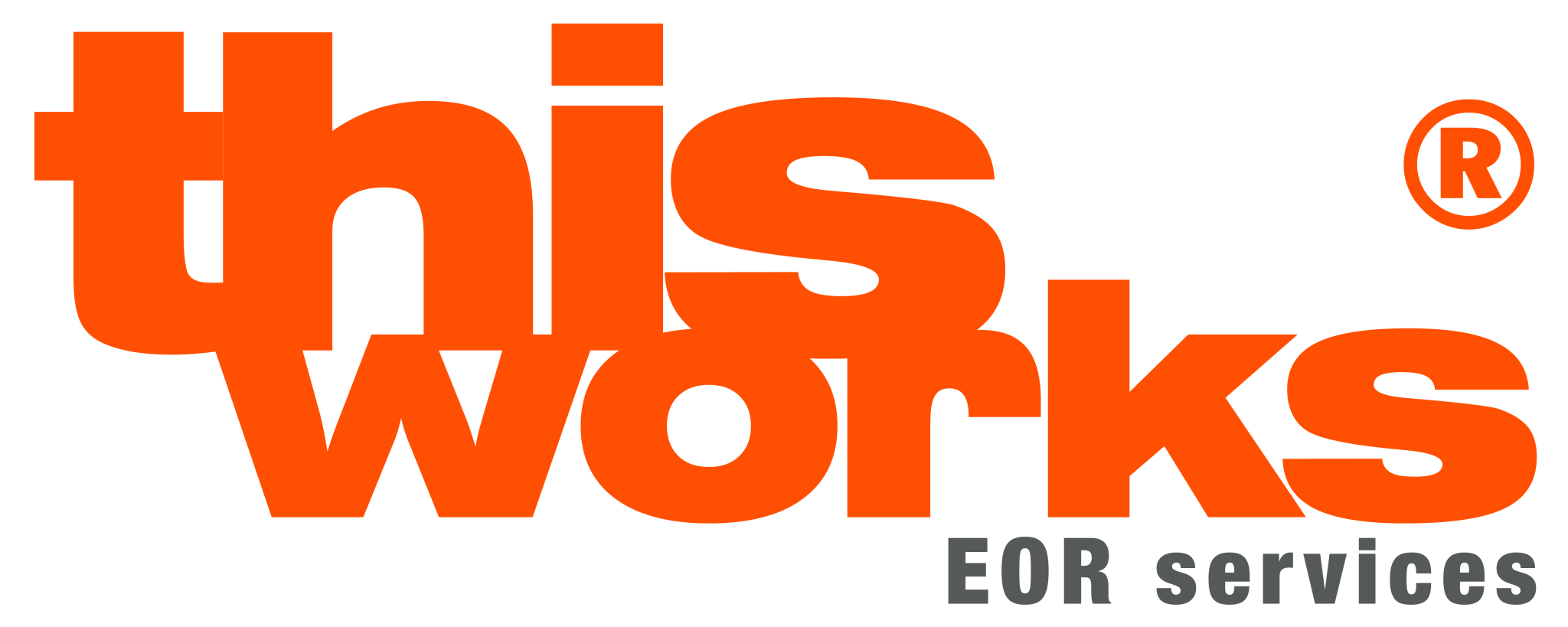
Employee Value Proposition Guide: crafting, aligning, and communicating effectively
Attracting and keeping top talent is more important than ever in today’s competitive employment market. A well-aligned employee value proposition (EVP) is one strong instrument companies may employ to differentiate themselves. An EVP is like your company’s unique selling proposition (USP); instead of promoting a good or service, you’re selling the work experience your company offers.
A strong EVP will greatly improve your recruitment efforts and increase staff retention. A well-considered EVP informs your current staff members that you value them and their efforts. These advantages enhance your company’s brand and help you to build your reputation. If your EVP is clear, appealing, and reflects your employee experience, values, and corporate culture, it presents you as a desirable organization. This leads to higher production, greater creativity, and a more cooperative workplace. Let’s explore EVPs more closely, from how to create a compelling one to actual case studies of effective EVPs in use.
Developing a compelling Employee Value Proposition: An all-inclusive handbook
Writing an interesting employee value proposition (EVP) is like sending a special invitation to gifted people. But first, you have to know who you are inviting!
Understanding your audience
The first step is to get to know your prospective applicant. What skills and experiences define them? What’s their inspiration? Understanding your target market helps you match your EVP message to their aspirations. You can gain this information in many different ways. Surveys and focus groups with recent hires and current employees can provide very important insights. Examining the EVPs of your rivals can also help you uncover gaps and set out your unique services.
After that its time, to focus on the core values of your business. These are the fundamental principles driving your company’s mission and culture. Openness and honesty serve as the foundation for developing a strong EVP. Matching your EVP with your principle values ensures that your message is relevant for new and existing employees.
Defining your company values
Identifying your essential principles may be done through brainstorming sessions with leadership and staff. Consider questions such as what ideals are most important to us? How do we wish to be known? Once you’ve discovered your key principles, integrate them into concrete experiences for your workers. For example, if “innovation” is a key value, you may provide opportunities for workers to experiment with new ideas or participate in hackathons.
Differentiating your offerings
Let us now help you distinguish your business from the others! What special quality of your employee experience helps you stand out? Consider aspects like the workplace. Do you provide a casual dress code or a flexible work schedule? Moreover, career development possibilities are very important. Does your employer offer training programs or tuition reimbursement? Think about your company’s culture. Is it fast-paced, results-driven, or cooperative and entertaining? Remember also to consider benefit packages. Attractive benefits can include competitive health insurance, extra vacation time, and daycare choices. Finding these special features can help you highlight what distinguishes your business.
Crafting your EVP statement
Finally, it’s time to construct the core of your EVP—the remark that embodies its essence. This core message should be straightforward, action-oriented, and easy to understand. A step-by-step process for making an EVP statement could look like that:
- Start with a benefit and highlight what your organization offers to workers.
- Focus on your target audience and tailor the message to resonate with your desired prospect.
- Use powerful and action-oriented verbs to produce a sense of excitement and potential.
- Keep things brief and use sentences that are easy to remember and repeat.
A strong EVP is like a terrific party invitation—it makes people enthusiastic to come! But imagine coming up with a boring lecture instead of the promised dancing floor. That’s why it’s necessary to match your EVP with corporate values. It guarantees your message is true and translates into a reality for workers, from the initial interview to their regular work life.

Importance of aligning EVP with company values
Think of your EVP as a company-wide commitment. For it to be genuinely effective, everyone needs to be on the same page. Let’s discuss why internal alignment is crucial.
Leadership as role models: Your leaders set the tone for the entire company. If they don’t understand and embody the EVP, it sends an undefined message to workers. Training and seminars may assist leadership champions in understanding and living corporate values.
HR and hiring managers: These people are the gatekeepers to your corporate culture. Equipping them with the EVP message helps them attract applicants who agree with your values and can thrive in your environment.
Employee buy-in: When workers believe in the EVP, they become brand advocates, both internally and externally. Regularly expressing the EVP and its relationship to organizational values creates trust and engagement.
Job descriptions and recruitment materials
Don’t simply list tasks; demonstrate how the position connects with your values and the dynamic work environment you provide.
Interview conversations: Let the EVP guide your interview questions. Focus on finding a candidate’s values and how they match with your organizational culture.
Employer branding: Use your career website and social media platforms to display your business culture and the rewards of working there.
Onboarding and beyond
The EVP shouldn’t end with the offer letter. You may ask yourself now how to keep it relevant throughout the employment?
Onboarding programs: During the onboarding process, explain to new hires your company’s values and how they integrate into the daily workplace.
Evaluations of performance: Link performance reviews and employee goals to the company’s core principles and the EVP.
Company culture initiatives: Organize events, team-building activities, and recognition programs that reinforce your company values and the EVP message.
Metrics to measure EVP success
So, you’ve produced a beautiful EVP, but how do you know it’s working? Here’s where metrics come in—they’re informing you if your EVP is working smoothly. The best way to do this is with key performance indicators (KPIs). They help you to track and determine your EVP’s effectiveness:
- Application rates: Are you recruiting a greater pool of eligible candidates?
- Time-to-hire: Is your EVP simplifying the hiring process by attracting the right match faster?
- Employee retention rates: Is your EVP keeping your skilled workforce happy and motivated, lowering turnover?
- Employee engagement surveys: What do your employees say? Are they pleased with the work environment and possibilities your EVP promises?
Make adjustments to keep up with the market pace
Don’t just compile data; use them to your benefit! Examine the material you gather. For low application rates, for instance, review your job descriptions or EVP messages. Similarly, low employee engagement rates could suggest a discrepancy between your EVP and the actual work experience. Regular monitoring of these variables and adjusting your EVP depending on the data ensures that it stays current and keeps attracting and retaining top workers in an always-changing employment market.
Effective communication of EVP to stakeholders
What drives these EVPs to be successful? They resonate with their intended audiences. They communicate directly to the values and aspirations of the people they hope to attract. Effective internal and external communication of your EVP helps you establish a consistent brand image and draw top candidates appropriate for your company culture. How should your EVP be presented to audiences both inside and beyond your company?

Internal communication
These strategies will ensure they embrace the EVP:
Leading as champions: Leaders set the tone for themselves. Using town halls, team meetings, and leadership development initiatives, often highlight the EVP and its connection to corporate values. Leaders who live the values inspire employees to follow.
Clear message: Give the EVP message to HR and hiring managers so they may be equipped.
Courses and seminars: Training courses and seminars can help them find candidates that fit your values and offer a positive interview experience that reflects your EVP.
Channels of employment communication: Keep the EVP message top-of-mind and celebrate employees who exemplify the corporate values by using internal communication channels including newsletters, articles, and employee recognition programs.
External Communication
Job descriptions and recruitment materials: Don’t simply list tasks; illustrate how the position connects with your values and the stimulating work environment you provide.
Career website and social media: Use these channels to highlight your corporate culture, the benefits of working there, and actual employee tales that exhibit the EVP in action.
Employer branding materials: Craft appealing marketing materials emphasizing your unique selling offer as an employer.
Real-world examples of successful EVPs
A strong EVP isn’t simply a clever phrase; it’s a promise put into action. Here are a few firms from diverse sectors that are winning the talent battle with their captivating EVPs:

1. Ray Ban: See the world differently
This contemporary eyewear firm isn’t just about attractive spectacles; its EVP is all about establishing a fun, creative, and mission-driven work atmosphere. They attract millennials and Gen Z talent who desire a lively workplace culture and a commitment to social good. Their social media presence is a fantastic example, loaded with staff images displaying their collaborative and cheerful work culture.
What makes it effective? Ray Ban knows its target audience. They respond directly to the demand for a fun and interesting workplace, while also showcasing their dedication to social responsibility, which resonates with younger generations.

2. Patagonia: Nature lovers unite!
The outdoor goods business Patagonia sells a lifestyle, not only coats and tents. Their EVP is roughly social consciousness and environmental responsibility. They attract driven people who believe in sustainability and share their values. Patagonia aggressively encourages worker involvement and environmental issues; hence, this is not only a marketing tool.
What distinguishes it from others? The EVP of Patagonia is clear, honest, and immediately addresses a certain audience. People who are environmentally sensitive and choose purpose-driven work find themselves drawn to a company that shares their values.

3. Nike: Inspire and innovate
Their EVP focuses on building a good, supportive, and empowered work environment. They invest extensively in employee well-being, giving incentives like on-site exercise centers and generous vacation time. This people-centric approach attracts applicants who thrive in a collaborative and enjoyable culture.
What makes it effective? Nike recognizes that happy workers lead to happy consumers. They promote employee well-being, building a culture of trust and autonomy. This connects with folks who appreciate a healthy work-life balance and a supportive work environment. Here you can read more about it.
Frequently Asked Questions
1. What is an Employee Value Proposition (EVP)?
An EVP is essentially a unique selling proposition for your company; instead of selling a product, you’re selling the experience of working there. It clearly expresses why your organization is a wonderful place to work.
2. How does an EVP differ from an employer brand?
An EVP focuses internally on the value proposition supplied to workers, whereas an employer brand focuses publicly on the company’s reputation as a workplace.
3. What are the main components of a strong EVP?
Aligning your EVP with your major organizational principles can help you to be authentic.
Emphasize what sets your company apart in terms of work environment, culture, and benefits.
- Your message should be specifically relevant to the intended candidate.
- Use straightforward, unambiguous language to ignite passion.
- Track results to modify your messaging and assemble outstanding personnel.
Article Author – Gino Peters
Gino Peters is the Commercial Director at ThisWorks, with a rich history of nearly a decade in international payroll. Throughout his tenure, he has consistently kept abreast of evolving labor legislation, ensuring that ThisWorks remains at the forefront of industry knowledge. Beyond his vast expertise, Gino is deeply committed to advising and guiding clients and partners with precise insights. His leadership guarantees that all content and operations at ThisWorks meet the highest standards of clarity, accuracy, and compliance.
Follow him on Linkedin
Book a free consultation with Gino Peters






